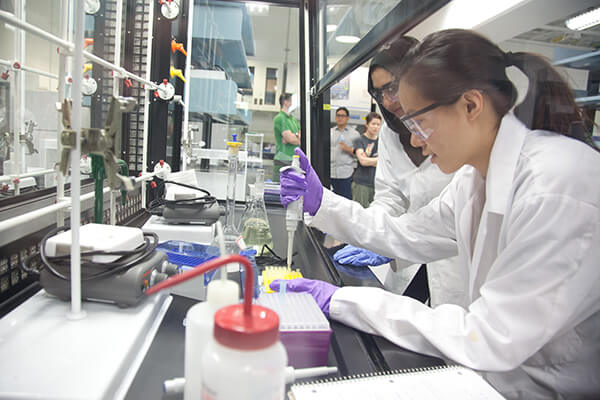Students & Research

From day one at the University of Toronto, you’ll be learning from top researchers. Engage in seminars, courses, office hours, volunteer work, summer positions and much more.
You might apply for research opportunities like the Natural Sciences and Engineering Research Council of Canada’s Undergraduate Student Research Awards or, in second year, the Research Opportunity Program through the Faculty of Arts and Science or the University of Toronto Mississauga. You could set off to excavate fossil sites in Hungary, examine HIV/AIDS-related issues in Namibia, or develop a painkilling drug analog, without toxic solvents – and you could end up publishing your findings in peer-reviewed journals.
You can get hands-on experience through the University of Toronto Scarborough’s Arts and Science Co-op programs, the University of Toronto Mississauga’s experiential learning opportunities, or the St. George campus Faculty of Arts and Science’s International Course Module or Research Excursion Program. You might spend a week in Kosovo researching the diaspora’s impact on economic development, or observing international trade agreement negotiations in Brasilia.
Field schools are another option for students in areas such as archeology, anthropology, geology, ecology, environmental science and biology. Fourth-year ecology and evolutionary biology student Danielle de Carle studied the dung beetle in the Peruvian rainforest during a two-week Tropical Field Biology course. Since this course has students trekking into one of the world’s biodiversity hotspots, it’s no surprise they’ve made a novel discovery: a jumping caterpillar.
Of course, you don’t need to travel abroad to expand your horizons. You could participate in Ecology and Evolutionary Biology field courses in Algonquin Provincial Park, or local archeological digs.
You might develop your own breakthrough right here on campus, just like Qian (Linda) Liu and Kaiyin (Cathy) Zhu. In their fourth year as undergraduates in engineering, they took a project-based Biomaterials and Biomedical Engineering course, in which students tackle real-world predicaments. After an anesthesiologist in the community described a need, the students devised a $20 3D-printed tracheal intubation tool, and won awards for its imaginative design.
This just scratches the surface. With the University of Toronto’s 12,589 leading faculty members, and over a billion dollars in research funds awarded a year, we offer many different ways to get involved. Whatever your academic interests, you’ll find a variety of opportunities to pursue research – both within the classroom setting, and beyond.




